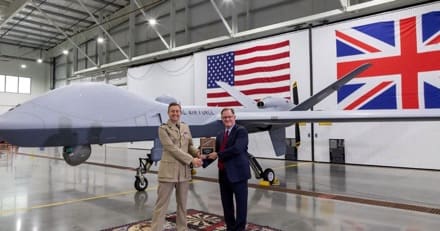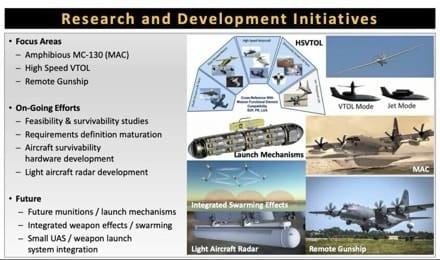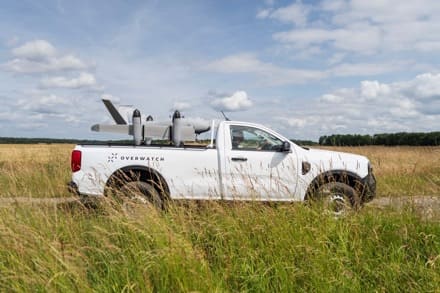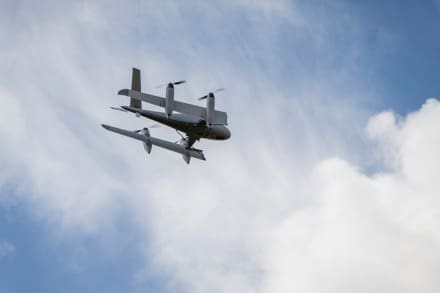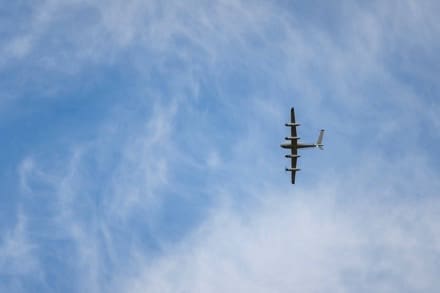Under a request for information from industry entitled, “Dismounted Counter small Unmanned Aircraft System (CsUAS)” Marine Corps Systems Command’s Program Manager (PM) Ground Based Air Defense (GBAD) Dismounted Counter small Unmanned Aircraft System (CsUAS) has announced its on the lookout for systems to support “every” Marines’ ability to conduct self-defense against threat Groups 1 and 2 small UAS (sUAS).
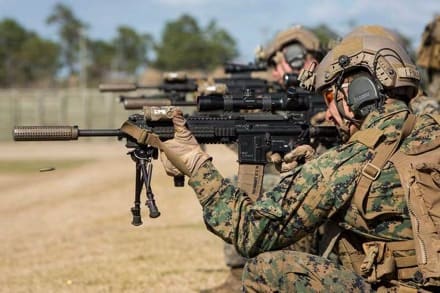
Photo: LCpl Christian J Robertson/Marine Corps
Specifically, capabilities for the Squad and Platoon organizations across the MAGTF that are capable of detecting, tracking, identifying and defeating Group 1 and Group 2 UAS.
The Squad-level solutions need to be carried by dismounted Marines with little to no impact on their primary mission. The Platoon-level solutions may be transported in light tactical vehicles, assembled without the use of material handling equipment and operate on battery power.
They explain the reasoning behind the requirement below:
With the proliferation of UAS as a threat on the modern battlefield, Marines require the ability to maintain awareness of friendly UAS and conduct self-defense against threat UAS. Every unit down to the individual Marine, regardless of geographic location on the battlefield, is vulnerable to reconnaissance and, more dangerously, attack from threat sUAS. To facilitate freedom of movement, Marines require the ability to conduct self-defense against the threat. This has been proven through multiple Department of Defense (DoD) experiments, training exercises, and has been proven during real-world operations.
Each phase of the kill-chain requires a different component making dismounted CsUAS more difficult in terms of Size, Weight and Power (SWaP). The dismounted CsUAS capability will be employed and support all elements of the Marine Air Ground Task Force (MAGTF), not just professional air defenders. The dismounted CsUAS solution will need to be easy-to-use, easy-to-train, light-weight and use systems currently organic to the Marine Corps to the maximum extent possible.
The Joint CsUAS Office (JCO) has identified dismounted CsUAS capabilities as a vulnerability to the Joint force. The Marine Corps Warfighting Lab (MCWL) identified the need for dismounted CsUAS throughout multiple experiments. Additionally, Tactical Training and Exercise Control Group (TTECG), Infantry Officer Course (IOC), both Schools of Infantry (SOI), and other units continue to fly threat UAS against Marine units during field exercises and training events. Each experiment and training exercise shows Marines are vulnerable to threat UAS and require the ability to defend themselves from the threat.
Without a CsUAS capability to employ at lower echelons in an integrated and layered defense, every unit and every Marine will be vulnerable to reconnaissance and attack from threat UAS, risking mission success and loss of life.
The solutions may include capabilities described below:
Detect / Track / Identify:
• Squad level. Passive detection system that can detect UAS using acoustic or radio frequency (RF) detection. Sensor should be body worn with limited impact on primary mission equipment. Components may include a Handheld tablet, bracelet, earpiece, and/or glasses that receives alerts, warnings, notifications from an external sensor(s) (i.e. radars and/or passive detection systems).
• Platoon level. Passive detection system that can detect UAS using acoustic or radio frequency detection. Sensor can be vehicle, mast or tripod mounted. Components may also include a handheld tablet, bracelet, earpiece, and/or glasses that receives alerts, warnings, notifications from an external sensor(s) (i.e. radars and/or passive detection systems).
Defeat:
• Squad level. Non-kinetic – Directional RF and/or Global Positioning System (GPS) jammer, ideally able to mount on organic rifle. Kinetic – A rifle / rifle optic capable of tracking and defeating small UAS. Enhanced ammunition for existing firearms (buckshot-like 5.56, 7.62, .50, .40mm).
• Platoon level. Non-kinetic – Omni-directional RF/GPS jammer and/or spoofer. Kinetic – A rifle / rifle optic capable of tracking and defeating small UAS. Enhanced ammunition for existing firearms (buckshot-like 5.56, 7.62, .50, .40mm).
If you’ve got a solution, the Marines want to hear from you. Responses shall be submitted no later than 1700 Eastern Time on 2 August 2024. Telephone replies will not be accepted.
The RFI specifies how submissions must be formatted and where to send them, so be sure to check it out.


